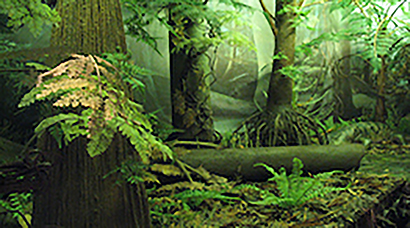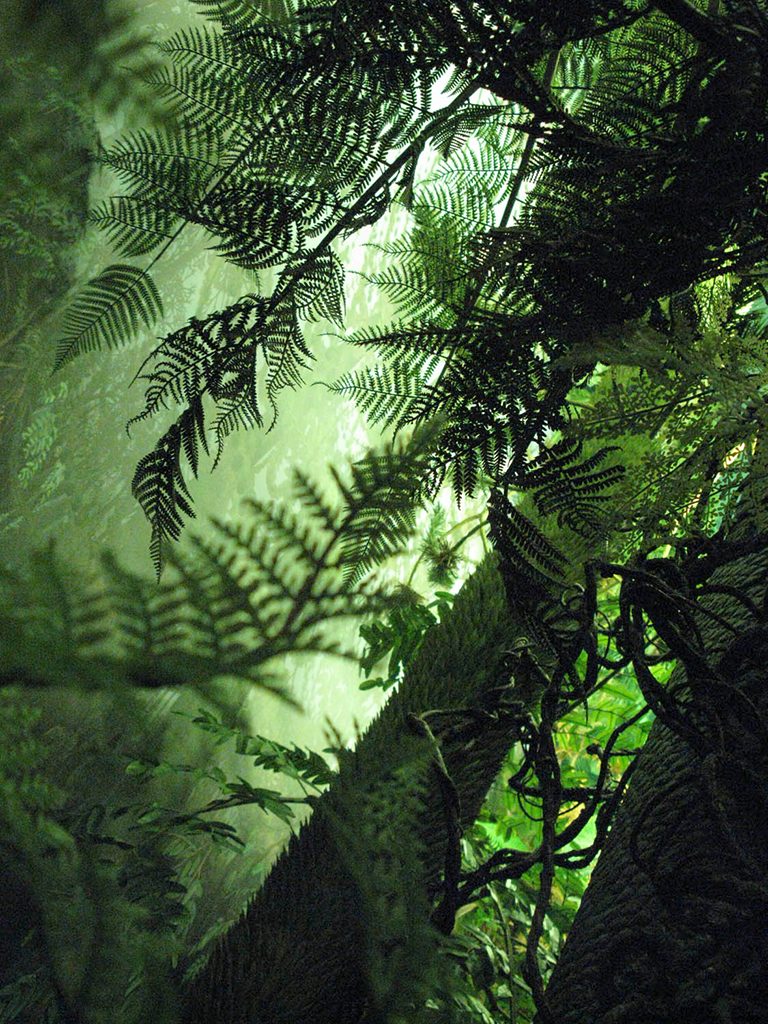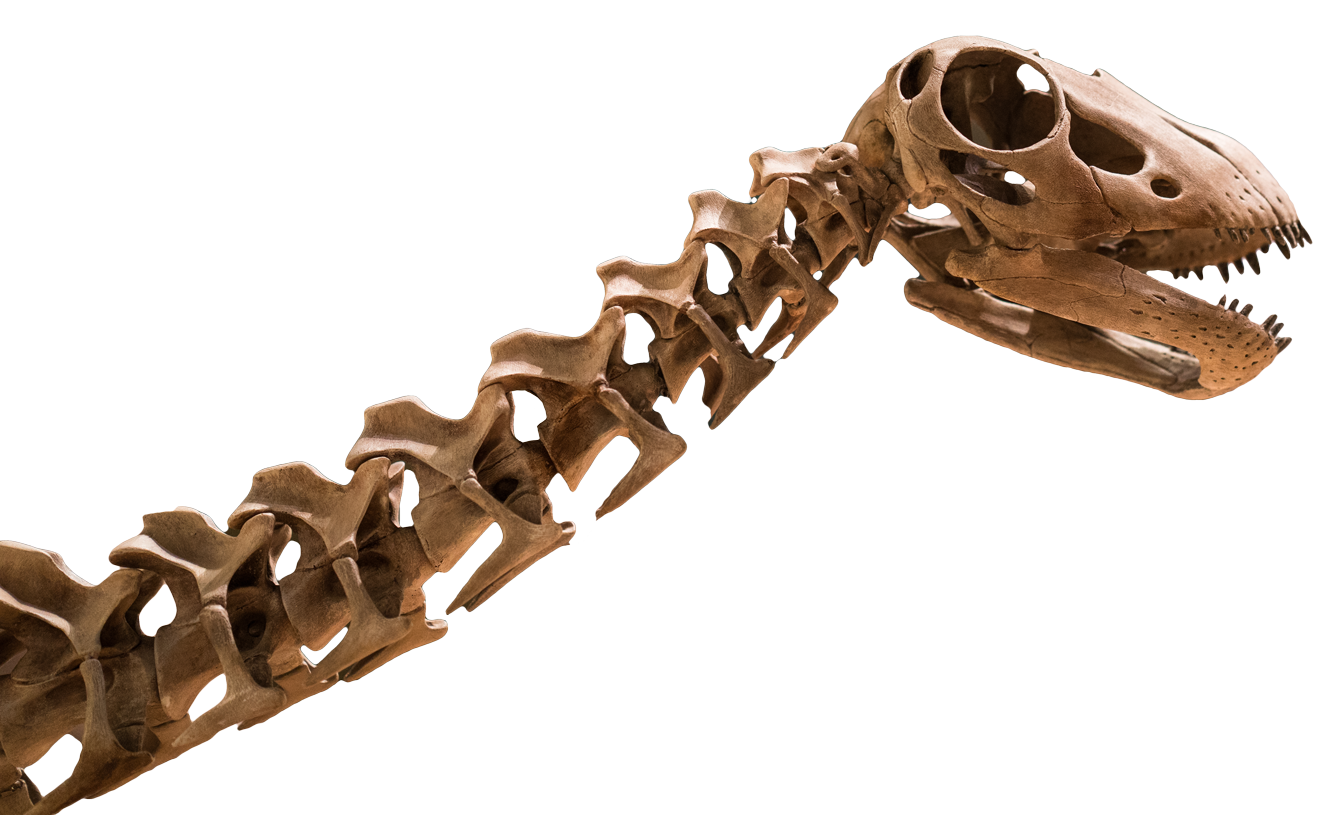Fern fossil bore witness to a continental collision.
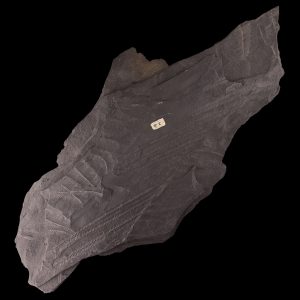
| Identification: Pecopteris sp. |
| Common Name: Tree fern frond |
| Kingdom: Plantae (Green Plants) |
| Phylum: Tracheophyta (Vascular Plants) |
| Class: Marattiopsida (Ferns) |
| Order: Marattiales |
| Location: Rhode Island, United States |
| Rock Unit/Stratigraphy: Rhode Island Formation |
| Geologic Time Frame: Carboniferous (Pennsylvanian) Period |
| Estimated age: Approximately 306 million years before present |
| Significance: Measurements of individual leaflets laying 90 degrees to each other demonstrate that this fern frond, and the rock it is in, was stretched by 350 percent during the collision of North America, Europe and Africa that formed Pangaea over 300 million years ago. |
| Other notable fact: Rhode Island lies on the east side of the Appalachian Mountains. Therefore, fossil plants from this site are more closely affiliated with plants from Europe and North Africa than from the rest of North America. |
History
Let’s go back about 306 million years. What would become the North American continent was near the equator of the Earth. In what is now Rhode Island, the landscape once supported lush, tropical forests.

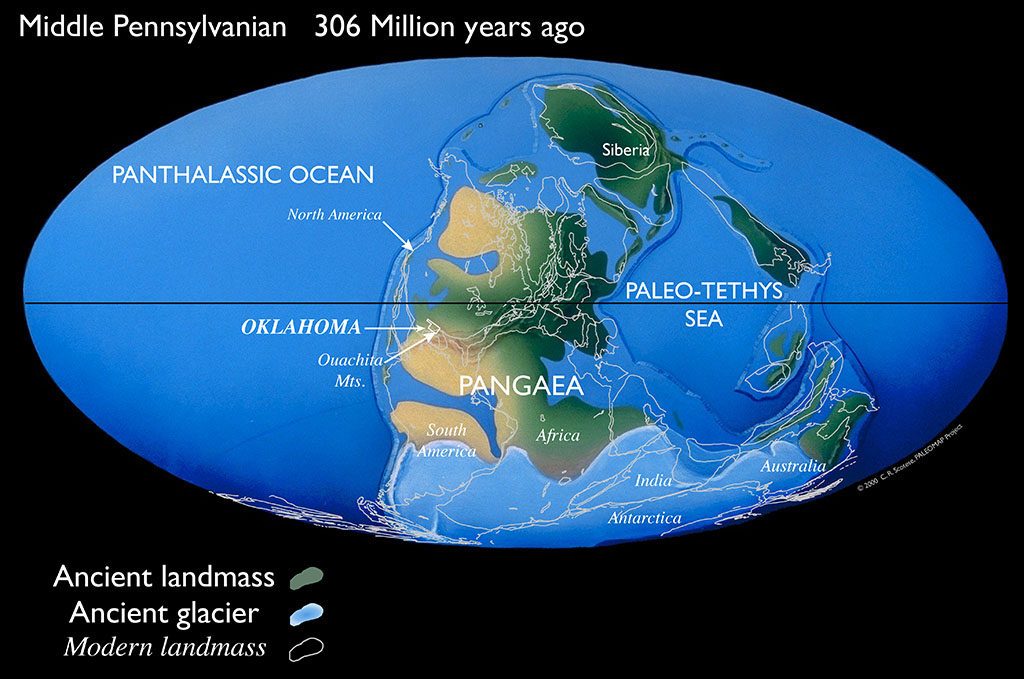
Middle Pennsylvanian map
Leaves from the tropical vegetation would fall into the mud and be buried. Over time, as the mud turned to rock, the leaves left imprints in the form of fossils.
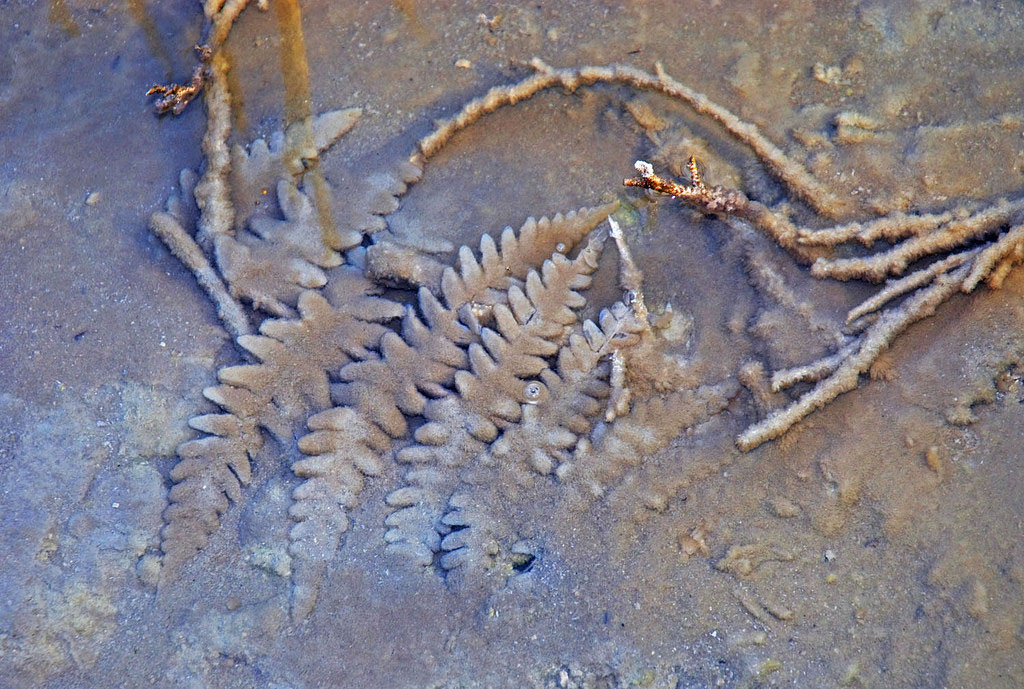
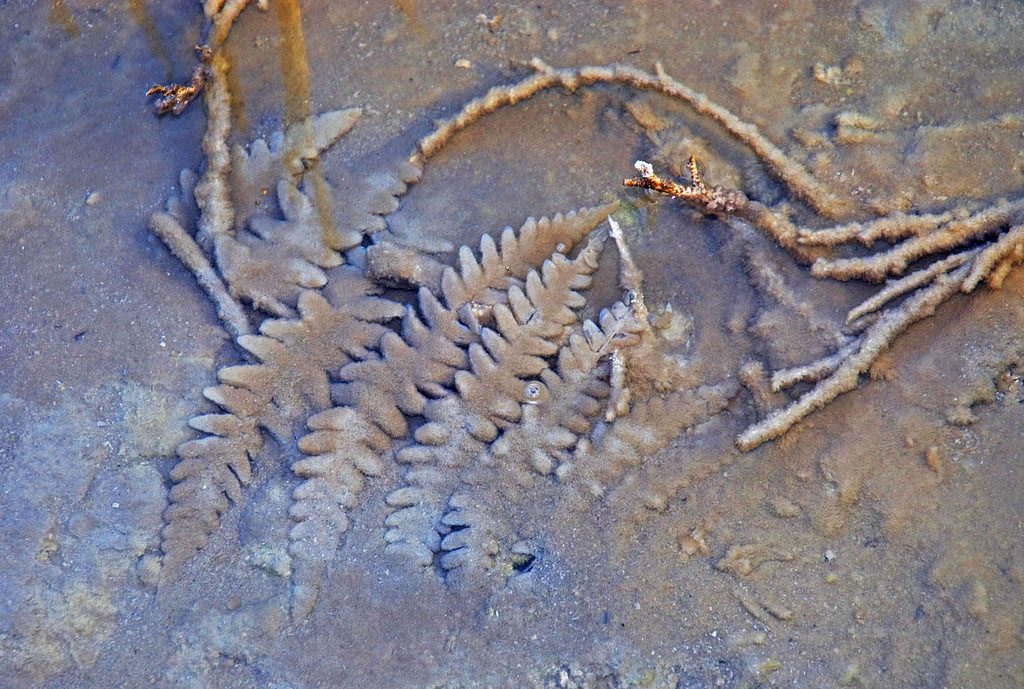
Fern in mud
At this time, continents were colliding to form the supercontinent Pangaea. These massive collisions very slowly stretched/squeezed, bent and heated the Rhode Island rocks caught in between. Usually stretching/squeezing and bending destroys fossils, but if the stretching and heating is not too great, fossils survive to provide evidence of what happened. This specimen from Rhode Island happens to be such a case documenting the stretching/squeezing that occurred.
Evidence
Here are pictures of what a normal Pecopteris sp. looks like when it has not been stretched.
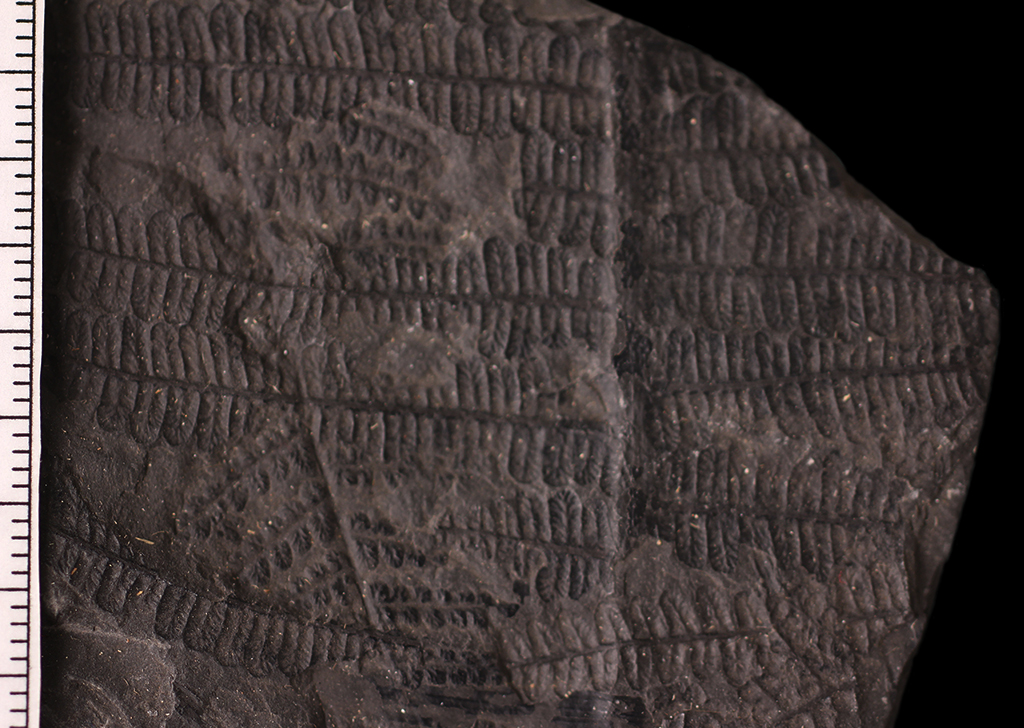
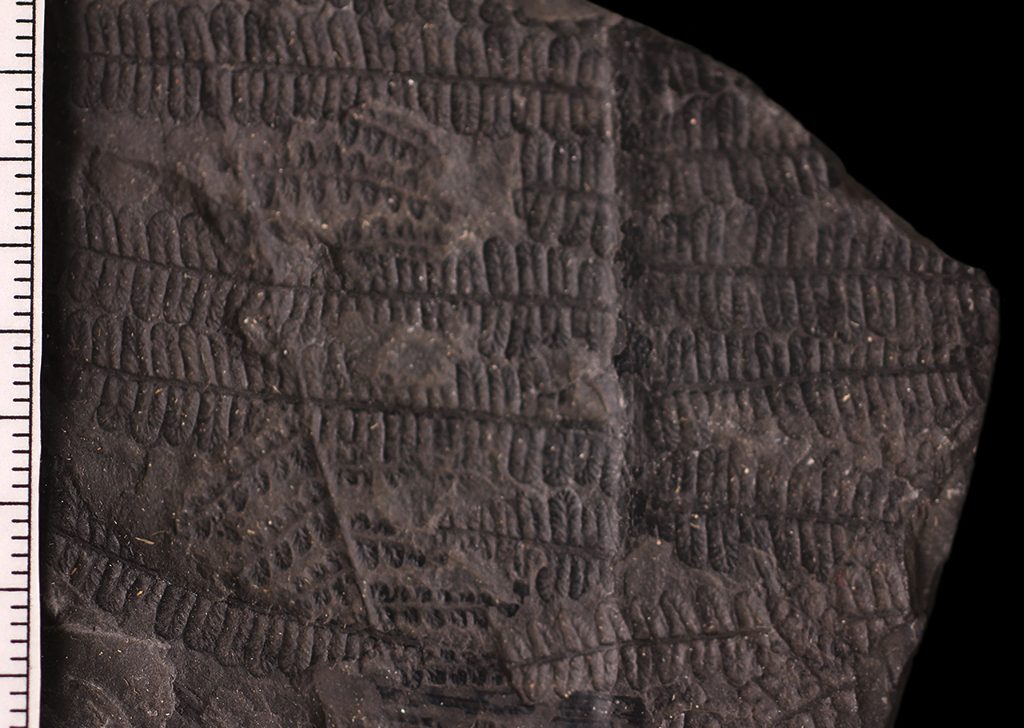
Pecopteris sp. OPC 3578-7844 - Close-up
Below is the slightly metamorphosed specimen from Rhode Island. In this rock, we see the impressions of several fronds of a fern called Pecopteris sp.. Some of the impressions do not look quite like the rest of the impressions of fern fronds. That is because they have been stretched or distorted. While some pinnules (portions of leaves) are short and wide, others are long and narrow depending on their orientation relative to the axis of stretching.


Pecopteris sp. OPC 9000-7957 - Entire specimen
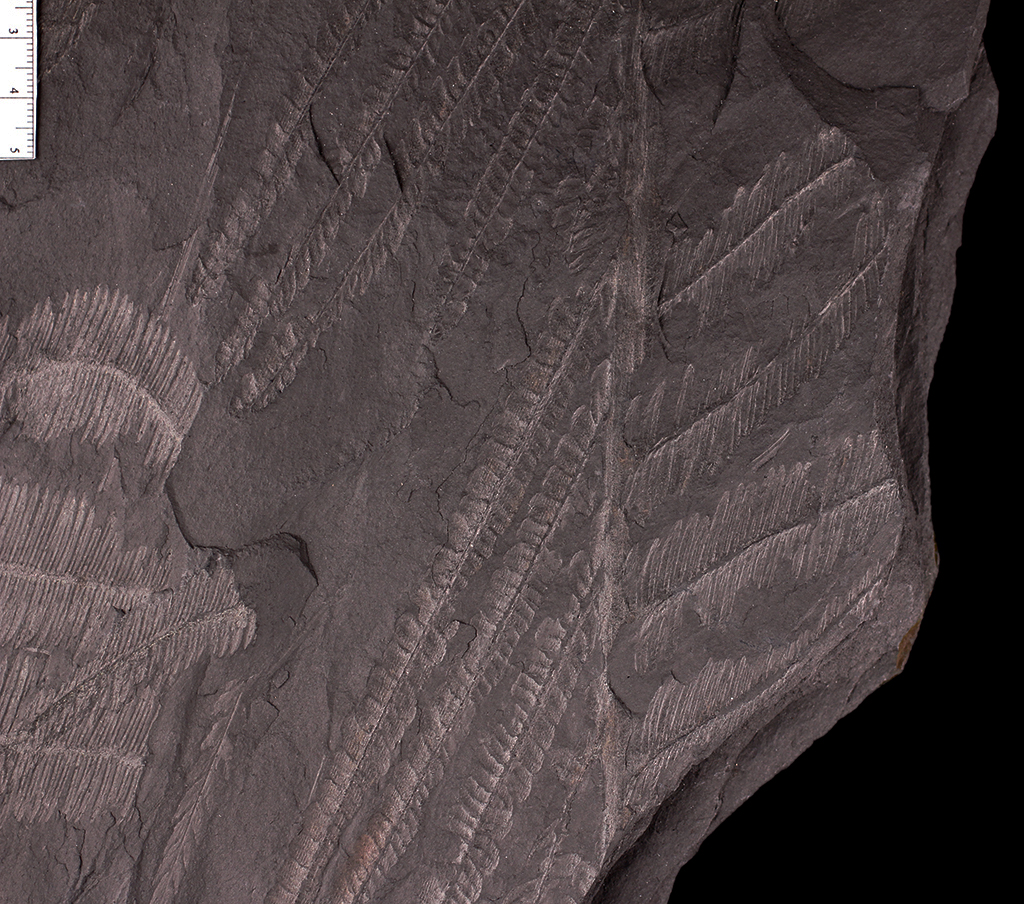

Pecopteris sp. OPC 9000-7957 - Close-up
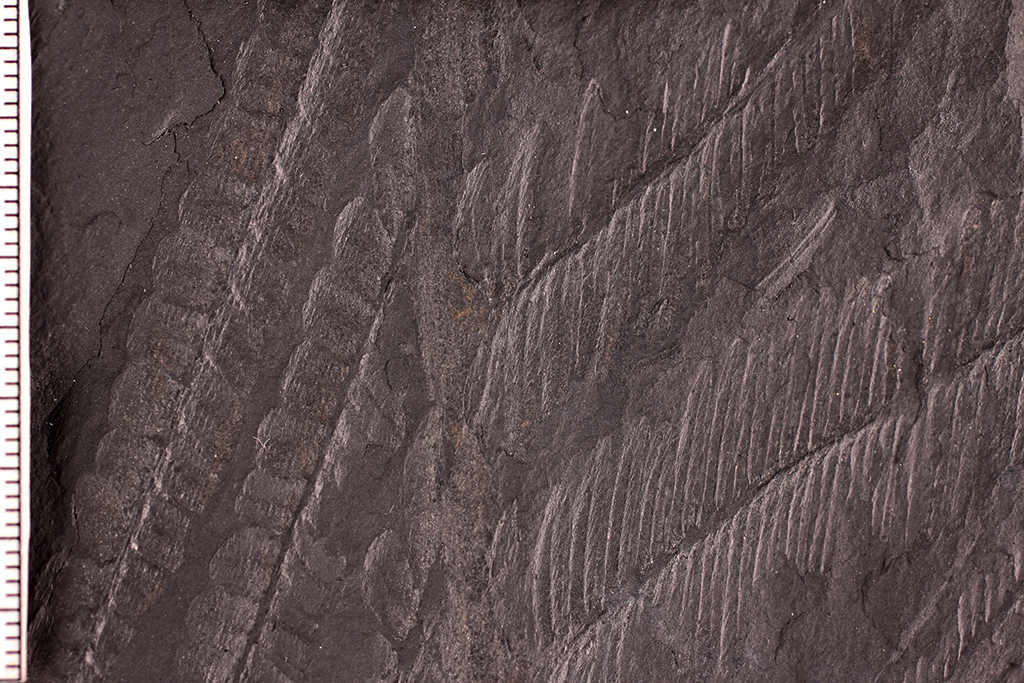
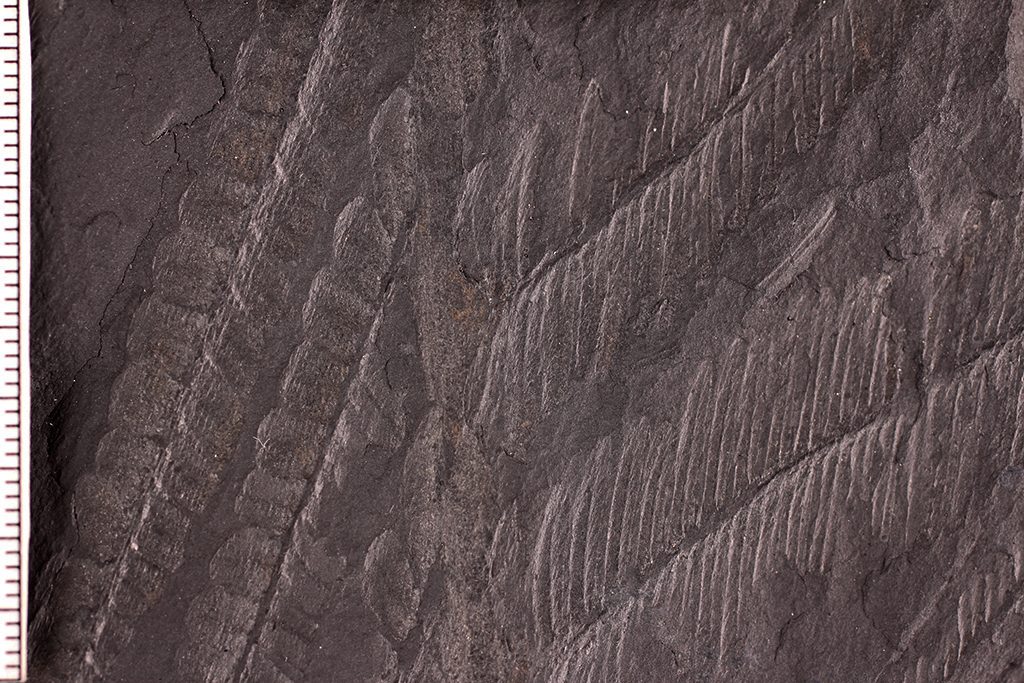
Pecopteris sp. OPC 9000-7957 - Close-up
If we look for pinnules that lie at about right angles (approximately 90 degrees) to each other, we can compare heights and widths. Upon measuring, we find the long pinnules are about 3.5 times longer than short pinnules, and the wide pinnules are about 3.5 times wider than the narrow pinnules. Therefore, over millions of years, the collision of continents stretched these rocks and fossils until they were 3.5 times longer than they were when they were first buried. With this evidence, we know the rocks were stretched to over 350 percent of their original size.
Further Reading (in order of publication)
Lyons, Paul C. and Darrah, William C., 1978. A late Middle Pennsylvanian flora of the Narragansett Basin, Massachusetts: Geological Society of America Bulletin v. 89, no. 3 p.: 433-438. doi: 10.1130/0016-7606(1978)89<433:ALMPFO>2.0.CO;2 [SNOMNH_Pbot-00000000]
Lyons, Paul C., 1979. Biostratigraphy in the Pennsylvanian of Massachusetts and Rhode Island, in Skehan, James W., Murray, Daniel, P., Hepburn, J. Christopher, Billings, Maryland P., Lyons, Paul C., and Doyle, Robert G., eds., The Mississippian and Pennsylvanian (Carboniferous) systems in the United States–Massachusetts, Rhode Island, and Maine: United States Geological Survey Professional Paper 1110-A, p. A20-A24. https://pubs.er.usgs.gov/publication/pp1110AL [SNOMNH_Pbot-00000000]
Lyons, Paul C., 1984. Carboniferous megaflora zonation of New England, in Sutherland, P. K. and Manger, W. L., eds., Neuvieme Congres International de Stratigraphie de Carbonifere (9th International Congress of Carboniferous Stratigraphy and Geology): Compte Rendu-Stratigraphy, Southern Illinois University Press, Carbondale, Illinois, United States, v. 2, p. 503–514. [SNOMNH_Pbot-00000000]
Skehan, J.W., Rast, S. J. N. and Mosher, S., 1986. Paleoenvironmental and tectonic controls of sedimentation in coal-forming basins of New England, in Lyons, Paul C., and Rice, Charles L., eds., Paleoenvironmental and tectonic controls in coal-forming basins of New England: Geological Society of America Special Paper 210, p. 9-30. doi: 10.1130/SPE210-p9 [SNOMNH_Pbot-00000000]
Franz, G., Mosbruggr, V., and Menge, R., 1991. Carbo-Permian pteridophyll leaf fragments from an amphibolite facies basement, Tauern Window, Austria: Terra Nova, v.3, no. 2, p. 137–141. doi: 10.1111/j.1365-3121.1991.tb00865.x [SNOMNH_Pbot-00000000]
Galvez, M. E., Beyssac, O., Benzerara, K., Bernaard, S., Menguy, N., Cox, S. C., Martinez, I., Johnston, M. R. and Brown, G. E., Jr., 2012. Morphological preservation of carbonaceous plant fossils in blueschist metamorphic rocks from New Zealand: Geobiology, v. 10, no, 12, p. 118-129. doi: 10.1111/j.1472-4669.2011.00316.x [SNOMNH_Pbot-00000000]

